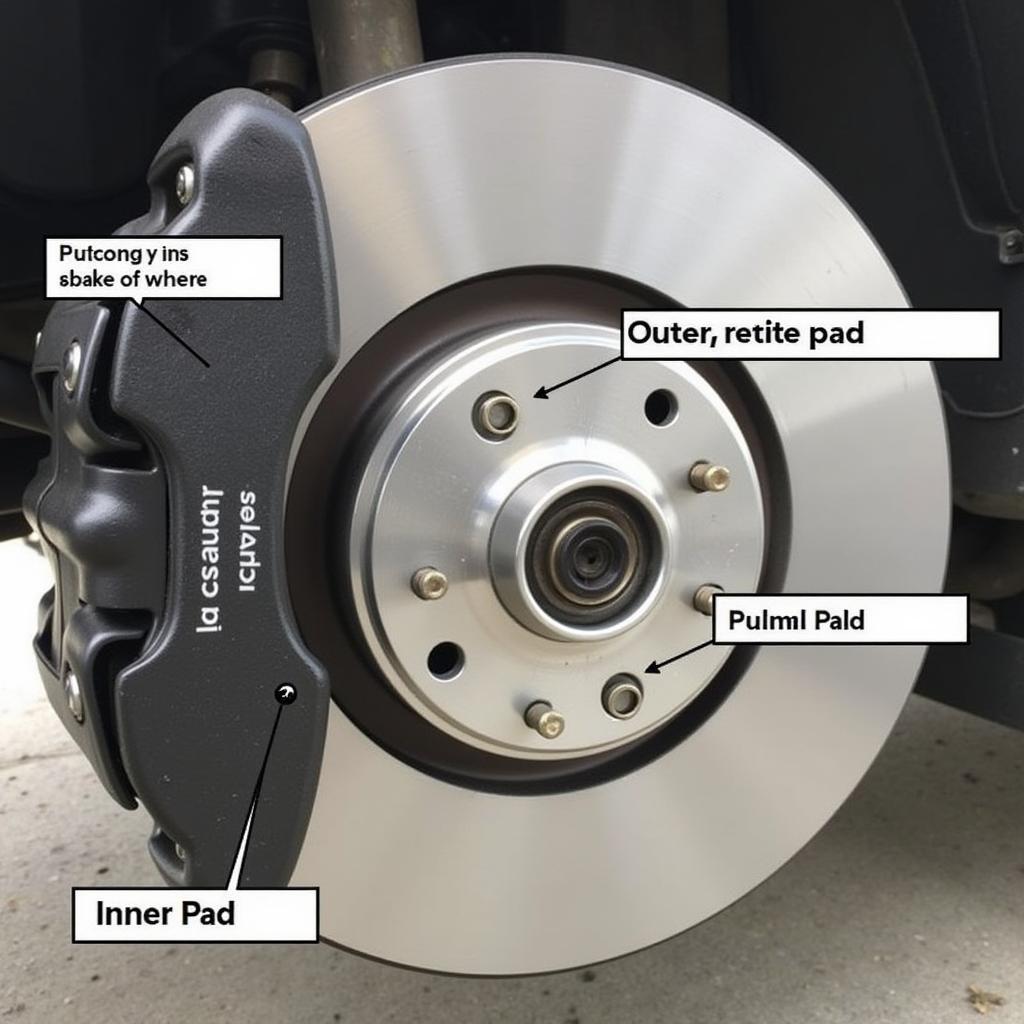The dreaded brake pad warning light on your classic Volkswagen Karmann Ghia can be a source of anxiety. This guide will delve into the common causes, diagnostic procedures, and solutions for this issue, empowering you to address the problem and get back on the road.
Understanding the Volkswagen Karmann Ghia Brake System
The Karmann Ghia, despite its sporty appearance, relies on a relatively simple hydraulic braking system. Understanding its core components is crucial to diagnosing brake pad warning light issues. These components include the master cylinder, brake lines, calipers, and, of course, the brake pads themselves. The warning light is triggered by a sensor that monitors the thickness of your brake pads. When the pads wear down to a certain point, the sensor activates the light on your dashboard.
Common Causes of the Warning Light
Why is your Volkswagen Karmann Ghia brake pad warning light on? Several factors can contribute to this:
- Worn Brake Pads: This is the most obvious culprit. Over time, brake pads naturally wear down due to friction.
- Faulty Brake Pad Wear Sensor: The sensor itself can malfunction, triggering the light even with sufficient pad thickness.
- Damaged Wiring: Wiring issues within the brake system can lead to erroneous signals.
- Low Brake Fluid: While not directly related to the pads, low brake fluid can sometimes trigger the warning light. This often indicates a leak in the system.
Diagnosing the Problem
How do you pinpoint the exact cause of the brake pad warning light? A systematic approach is best:
- Visual Inspection: Start by visually inspecting your brake pads. If they appear thin, replacement is likely necessary.
- Check Brake Fluid Level: Ensure the brake fluid reservoir is topped up to the correct level. If it’s low, there might be a leak requiring immediate attention.
- Test the Brake Pad Wear Sensor: A multimeter can be used to test the sensor’s continuity. This will determine if the sensor is functioning correctly.
- Inspect Wiring: Carefully examine the wiring connected to the sensor for any damage or corrosion.
“Regular maintenance is key,” says Karl Heinz Hoffman, a veteran Volkswagen mechanic with over 40 years of experience. “Inspecting your brake pads every 10,000 miles can prevent premature wear and unexpected issues.”
Fixing the Issue: From DIY to Professional Help
Depending on the diagnosis, the solution can range from a simple DIY fix to a more complex repair requiring professional assistance.
Replacing Brake Pads
Replacing brake pads is a relatively straightforward task for the mechanically inclined. You’ll need basic tools and a new set of brake pads specifically designed for your Karmann Ghia model.
Addressing Sensor and Wiring Problems
If the sensor is faulty, replacing it is a simple fix. Damaged wiring, however, might require more expertise, especially if the damage is extensive.
Handling Brake Fluid Leaks
Brake fluid leaks are serious and require immediate professional attention. Driving with a leak can compromise your braking ability, leading to dangerous situations.
“Don’t ignore the warning light,” advises Ms. Helga Schmidt, a renowned automotive safety expert. “Addressing brake issues promptly ensures your safety and prevents further damage to the braking system.”
Conclusion
The Volkswagen Karmann Ghia brake pad warning light serves as a vital indicator of your braking system’s health. Understanding its triggers and employing proper diagnostic procedures can save you time, money, and most importantly, ensure your safety on the road. Don’t delay addressing this issue, and if you’re unsure, seek professional assistance.
FAQ
- How often should I replace my Karmann Ghia’s brake pads? Brake pad lifespan varies depending on driving habits, but generally, replacement is recommended every 25,000 to 70,000 miles.
- Can I drive with the brake pad warning light on? While possible for short distances, it’s highly discouraged. Continuing to drive can damage the rotors and compromise braking performance.
- How much does it cost to replace brake pads on a Karmann Ghia? The cost depends on whether you do it yourself or hire a mechanic, typically ranging from $50 to $200 for parts and up to $400 for professional installation.
- What are the symptoms of a bad brake pad wear sensor? The primary symptom is an illuminated warning light even with sufficient brake pad thickness.
- How do I reset the brake pad warning light after replacing the pads? In most cases, the light will reset automatically once the new pads are installed and the ignition is turned on.
- What type of brake fluid should I use in my Karmann Ghia? Consult your owner’s manual for the recommended brake fluid type. Using the incorrect type can damage the braking system.
- Where can I find replacement brake pads for my Volkswagen Karmann Ghia? Auto parts stores, online retailers, and Volkswagen dealerships all carry replacement brake pads.


